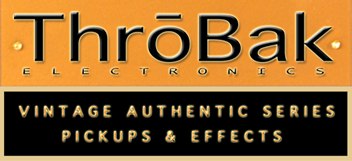Gibson has never used Urea-Formaldehyde glue on the fretboard or neck joint; as it is irreversible. Body, yes... neck/fretboard... no-way.Yes I think the Hide Glue affects the tone. What is funny is the originals didn't use Hide Glue, but some kind of Formaldehyde Glue. In any even it wasn't Titebond.
You are using an out of date browser. It may not display this or other websites correctly.
You should upgrade or use an alternative browser.
You should upgrade or use an alternative browser.
2020 R0 figured top has dead notes...
- Thread starter NotJeffBeck
- Start date
Victory Pete
Member
- Joined
- Dec 2, 2009
- Messages
- 254
Gibson has never used Urea-Formaldehyde glue on the fretboard or neck joint; as it is irreversible. Body, yes... neck/fretboard... no-way.
Makes sense, I wonder what they used? Hide?
mrbeasty
New member
- Joined
- Dec 19, 2002
- Messages
- 114
My first LP was a 2001 Classic. It was my main guitar for 17 years until I got a 2018 R0. Just got another 2018 R0 last spring. I have noticed on the R0s that some notes sustain more than others. My Classic on the other hand is consistent all over but does not have the Snap, Crack, Pop of the R0s. That Classic though does have a great sound of its own, very seventies rock sound. The wood and construction methods makes all the difference.
I am emotionally attached to my ‘96 Classic so I really tried to resolve its flaws. In short, one must replace everything: Those 300k pots, all the hardware, and maybe the pickups (a personal taste thing). Thankfully, nowadays, there are ways to improve resonance (like longer posts, better metal, increase contact points, etc.) and remedy dead notes and lack of sustain (to a point of course). Mine is at least twice as loud unplugged than it was stock. It is now on par with my “top shelf” Les Pauls. It is hard to say if it is better as not two sound alike unplugged and they all have different electronics, but it is no longer the lemon in the bunch.
Hot hide glue at the neck/body and fretboard/neck up to the second half of 1960. Hide glue dries to a hard crystalline; which makes the guitar sound closer to that of a bolt-on neck guitar. It's tuff to beat the sound of a bolt-on neck, but then nothing growls like a Gibby!Makes sense, I wonder what they used? Hide?
Victory Pete
Member
- Joined
- Dec 2, 2009
- Messages
- 254
I am emotionally attached to my ‘96 Classic so I really tried to resolve its flaws. In short, one must replace everything: Those 300k pots, all the hardware, and maybe the pickups (a personal taste thing). Thankfully, nowadays, there are ways to improve resonance (like longer posts, better metal, increase contact points, etc.) and remedy dead notes and lack of sustain (to a point of course). Mine is at least twice as loud unplugged than it was stock. It is now on par with my “top shelf” Les Pauls. It is hard to say if it is better as not two sound alike unplugged and they all have different electronics, but it is no longer the lemon in the bunch.
My Classic has always sounded great to me, no dead notes and loads of sustain. I love the 500T 496R pickups.
Victory Pete
Member
- Joined
- Dec 2, 2009
- Messages
- 254
Hot hide glue at the neck/body and fretboard/neck up to the second half of 1960. Hide glue dries to a hard crystalline; which makes the guitar sound closer to that of a bolt-on neck guitar. It's tuff to beat the sound of a bolt-on neck, but then nothing growls like a Gibby!
Is this confirmed? Why wouldn't they use hide on the top and back too?
I've been trying to confirm this, but I'm not getting any response from Gibson. They're running with a small crew; due to COMID-19 restrictions. I' assume the switch from hide to synthetic glue was done to cut-down on production time; thus increasing per quarter profits. Same goes with plasticizer in the nitro... Back in the day, each guitar was left to "cure" for 3O days before being finalized. Plasticizer was added to decrease the dry time.Is this confirmed? Why wouldn't they use hide on the top and back too?
For CS models, I would think that all surface mating is done using hide glue.
Victory Pete
Member
- Joined
- Dec 2, 2009
- Messages
- 254
I've been trying to confirm this, but I'm not getting any response from Gibson. They're running with a small crew; due to COMID-19 restrictions. I' assume the switch from hide to synthetic glue was done to cut-down on production time; thus increasing per quarter profits. Same goes with plasticizer in the nitro... Back in the day, each guitar was left to "cure" for 3O days before being finalized. Plasticizer was added to decrease the dry time.
For CS models, I would think that all surface mating is done using hide glue.
Interesting topic, I think hide glue is great, dries very hard and is very natural.
somebodyelseuk
Well-known member
- Joined
- Jun 10, 2020
- Messages
- 457
Fingerboard to neck and neck to body was hide glue. Thing is, it's waterbased and dries by evaporation. Using it for the top to body was impractical, since it would take months for it to cure in those circumstances. They used phenol formaldehyde glue for the tops, as it cures by heat, and apparently "microwaved" it.Is this confirmed? Why wouldn't they use hide on the top and back too?
As with most of the bits on the reissues, I suspect the hot hide glue they use today is not 100% exactly the same as used 'back in the day', and that phenol formaldehyde glue is probably banned, these days.
Victory Pete
Member
- Joined
- Dec 2, 2009
- Messages
- 254
Fingerboard to neck and neck to body was hide glue. Thing is, it's waterbased and dries by evaporation. Using it for the top to body was impractical, since it would take months for it to cure in those circumstances. They used phenol formaldehyde glue for the tops, as it cures by heat, and apparently "microwaved" it.
As with most of the bits on the reissues, I suspect the hot hide glue they use today is not 100% exactly the same as used 'back in the day', and that phenol formaldehyde glue is probably banned, these days.
I think months to cure is a bit of an exaggeration. It hardens as it cools off also. I have never used hide glue so I don't know how long it would take to fully harden and dry.
somebodyelseuk
Well-known member
- Joined
- Jun 10, 2020
- Messages
- 457
No thanks. Been there, done that, sort of. Played Yamaha SGs in the 80s - a 1000S and 2000S. The 2000 is neck thru' and a load of other gimmicks, the 1000 is set neck etc, bridge screwed in to the maple. The 1000 is the better guitar.How about a neck-thru LP Standard w/mahogany back and maple top? Anyone?
Last edited:
NotJeffBeck
New member
- Joined
- Mar 31, 2019
- Messages
- 24
Firebirds are neck-thru but of course no maple; all mahogany.How about a neck-thru LP Standard w/mahogany back and maple top? Anyone?
The Firebird is the one non-custom shop Gibson that sounds identical to the vintage ABR-1 originals.Firebirds are neck-thru but of course no maple; all mahogany.



